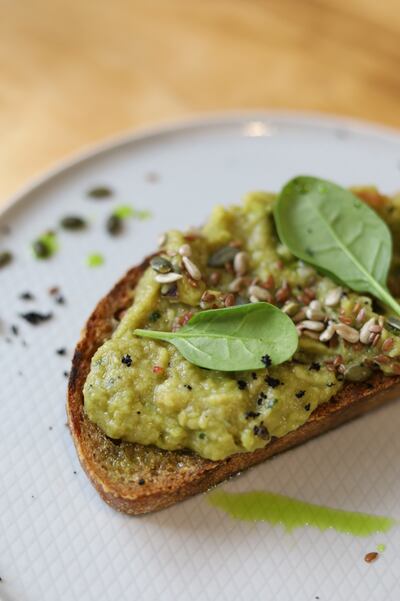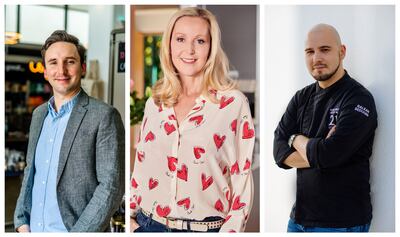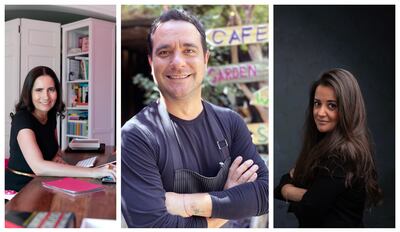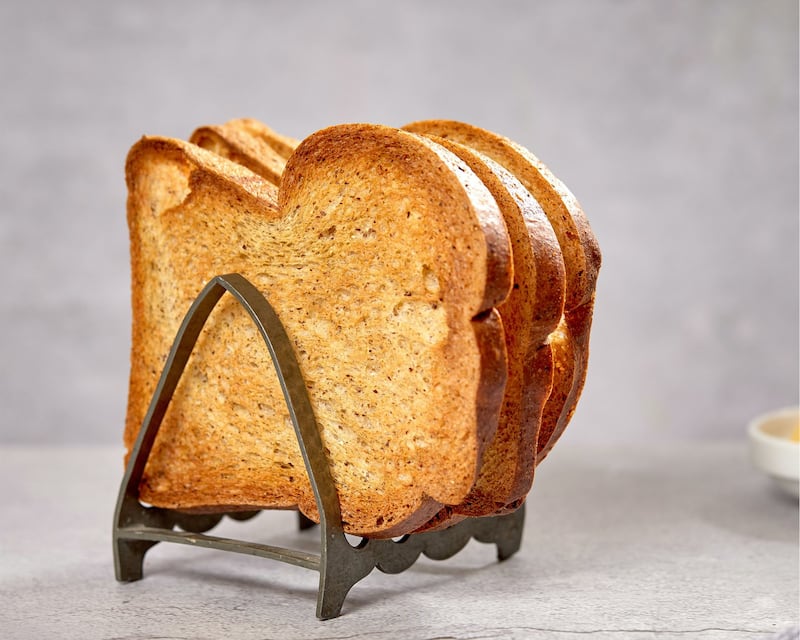Toast. It’s one of the simplest foods in the world with a foothold in most cultural cuisines, be it for breakfast, lunch or dinner. Whether topped with smashed avocado or simple butter, toast is one of those rare, transitional foods that can be enjoyed as a meal or snack, takes mere minutes to prepare and can be dressed up (caviar on toast), or down (beans on toast), for any time of day.
“It’s cheap, cheerful, quick, accessible, and there’s the added ease of cooking,” sums up Samantha Wood, founder of FooDiva.net.
But if you thought toast was simply a matter of bread plus toaster plus butter equals meal, think again. The dish is a lot more esoteric than it might appear, and everyone has their own way of making it, not to mention their own relationship with how it makes them feel.
“The normal way to ruin toast, as everything in the kitchen, is to make it without passion,” says Jesus Gibaja, chef at Dubai’s vegan cafe, Seva Table. “I know it sounds weird, it's just a toast, well it is not. A piece of toast can change your day.”
For self-confessed toast fan Victoria Beckham, it’s the comfort factor. The “picky eater” recently made headlines for her penchant for dry multigrain. “This is where I sound even more boring in the food department. OK, what do I like? I like wholegrain toast with salt on it,” the Spice Girl-turned-designer told the River Cafe Table 4 podcast. “It’s that carby thing isn’t it? It’s that carbohydrate that makes you feel comforted, and I love salt. What can I say?”
A brief history of toast

Bread dates back about 30,000 years, although the notion of baking it again to make toast is slightly more modern. From the Latin “torrere” meaning “to burn”, it’s likely that toast was created as a way to extend the life of stale bread in the way French toast or bread pudding is today.
Toast was originally used not as a meal in itself, but as an accompaniment to flavour soups, stews and drinks. In his 1602 play The Merry Wives of Windsor, Shakespeare has Falstaff demanding: “Go fetch me a quart of sack; put a toast in’t.”
Toast was originally made by putting sliced bread inside a metal frame or on a toasting fork and held over an open fire. The first electric bread toaster was invented by Scotsman Alan MacMasters in 1893, although early versions of it were prone to catching fire from overheating.
More recently, Millennial brunch trends brought “artisanal toast” to the fore, most famously avocado on toast – avo toast – while the pandemic gave rise (pun intended) to the sourdough starter that exploded across social media.
“I think it’s the fact that it’s fairly easy to do, the equipment required has solely one use and is usually part of most people’s kitchen set-ups,” says David Howard, development chef at Jones the Grocer, of toast’s enduring appeal. “As well as the ease, it’s a simple, fuss-free breakfast solution. The fact that the toppings are endless makes this a very customisable option for people.”
Grill v toaster v fire

“Firstly, I always use 1762’s multigrain cape seed loaf that I keep sliced in the freezer,” explains Sandy El Hayek, general manager, Time Out Market Dubai, of her personal approach to toast. “I grill it with olive oil on both sides until it burns slightly on the crust, with the seeds all crispy.”
Grilling the bread with olive oil is an approach also favoured by Gordon Ramsay. “It brings the whole crust to life,” the celebrity chef says. “We’ve all put bread in a toaster, but the difference in grilling the bread this way is extraordinary.”
For fans of toast, the simplicity and comfort of the process, smell and taste is complemented by the ease at which it can be created. Which for Nicci Clark, chief executive and founder of Re:Nourish healthy soups is in the toaster.
“Mealtimes are a ritual in our home and toasting bread is something we take very seriously, especially when served with our soups,” she says. “I like to pop a slice of brown bread in the toaster and flip it halfway through so both sides of the toast are equally grilled and delicious. Then I lightly butter it or spread some fresh guacamole on top.”
For those seeking utmost authenticity for their toast, and for whom nothing less than an open flame will suffice, the famous Mrs Beeton’s Book of Household Management, published in 1861, has this to say: “The toast-maker must put the bread on a toasting-fork and hold it before a very clear fire. Move it backwards and forwards until the bread is nicely coloured; then turn it and toast the other side, and do not place it so near the fire that it blackens.”
Simple pleasures and complex toppings

“For me, toast is one of life’s simple pleasures,” says Howard. “I always like to use a chunky slice that almost has to be squashed to fit in the toaster. I’ll always go for a traditional white loaf with toast, brown just doesn’t have the same effect. I like it fairly well done so a touch of slightly blackened crumb is good for me.”
When it comes bread, if you want to branch out the choice is extensive. Wood recommends Japanese milk bread, olive sourdough and brioche. “If I want something simple,” she says, “I spread a good, salted butter.”
And if you don’t want to keep things simple?
“I spread Jarra’s Goat Labneh, sprinkle fresh zaatar and top with crushed roasted hazelnuts,” says El Hayek. “Serving with a simple side of sweet plum tomatoes sprinkled with salt.”
For Uros Mitrasinovic, head chef at 21grams, there are two go-to options, sweet and savoury. “For my toast, I like wholewheat bread that is toasted golden brown, crunchy and chewy at the same time,” he says. “My preferred combination is pate and mayonnaise for savoury, butter and honey for sweet.”
“Sourdough gluten-free flour mixed with oats is my favourite combination for the bread with extra-virgin olive oil and a tiny bit of Maldon salt,” says Gibaja, of his personal sweet option. “Spread with hazelnut butter flavoured with vanilla and cardamom.”
A taste of childhood comfort
“This dish brings back everyone to their childhood, so it’s very personal,” says Mitrasinovic. “I believe that’s why it’s so diverse and long-lasting.”
The childhood connection to toast has long made it a staple food in children’s literature, with mentions in Mary Poppins, Harry Potter and Alice in Wonderland, in which the bottle labelled “Drink me” tastes to Alice like “a sort of mixed flavour of cherry-tart, custard, pineapple, roast turkey, toffy and hot buttered toast.”
Purveyor of classic comfort food, British TV chef Nigella Lawson caused a minor toast-related controversy late last year when she revealed her personal approach to buttering toast – doing it twice.
“I favour the two-stage buttering approach,” Lawson revealed in her BBC Two show Nigella's Cook, Eat, Repeat. "Stage one is, the minute this [toast] came out of the toaster all lovely and hot, I spread it with butter so that the butter has melted down into it and it'll give it a fabulous crumpety bite.
“For stage two, I need a little more butter, and it will stay in some golden patches on the surface. It’s unsalted butter, which I always prefer to use, but what I need to do is sprinkle some sea salt flakes over.”
It's likely that we have literary legend Toad from 1908 classic The Wind in the Willows to thank for the most evocative toast-related anecdote of all time. While languishing in jail, the irrepressible thrill-seeker is served a “plate piled up with very hot buttered toast, cut thick, very brown on both sides, with the butter running through the holes in it in great golden drops, like honey from the honeycomb”.
Describing the effects of the dish on the beloved character, author Kenneth Grahame wrote: “It talked of warm kitchens, of breakfasts on bright frosty mornings, of cosy parlour firesides on winter evenings, when one’s ramble was over and slippered feet were propped on the fender; of the purring of contented cats, and the twitter of sleepy canaries.”






